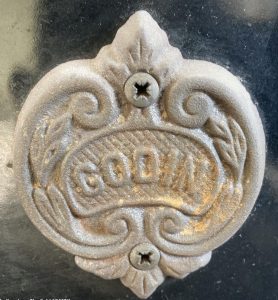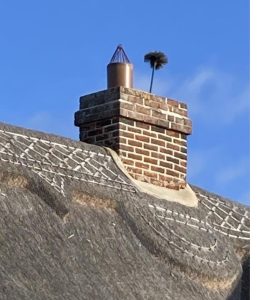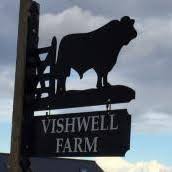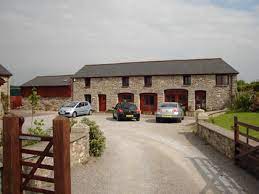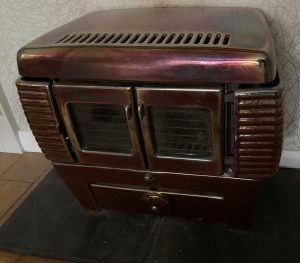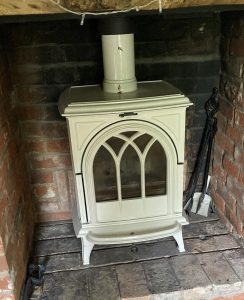
Here is something rather unusual, a Stovax Huntingdon 25 Multi-Fuel Stove but in a white enamel finish. I have swept numerous examples of the Stovax Huntingdon range of stoves over the years, but I had not come across one with an enamel finish. What I have seen a lot of manufactured by the stovax company and which comes in a number of different coloured enamel finishes, is the Stovax Brunel range, but I have not seen any other model of stovax stove in an enamel finish before. The lady customer was rather proud of her enamel stove and the fact that it is rather rare and unusual, although personally I’m not sure that a white finish is the best finish for a stove, as it will show any dirt or soot quite quickly. The customer was also pleased that the stove operates more than adequately to heat what was a rather large room.
The Stovax Heating Group has been dedicated to the design and manufacture of exceptional stoves, fires and fireplaces for 38 years. Today, we are one of the UK’s leading stove and fireplace manufacturers, exporting to over 25 countries worldwide.
Across our wood burning, multi-fuel, gas and electric products, we strive to create the future of fire. Each of our heating products is the result of decades of expert craftsmanship and class-leading innovation – representing the pinnacle of British engineering.
The Stovax Heating Group is proud to be part of the NIBE Stoves group, a market-leading provider of domestic heating products.
Based in Exeter, England, Stovax Ltd was established in 1981 to design, manufacture and distribute wood burning stoves and fireside accessories. By 1988, the sister company Gazco Ltd was formed to develop and produce gas and electric versions of Stovax stoves.
Today, Stovax and Gazco continue to work very closely together. Each company has constantly developed its product range such that the combined businesses have grown to become one of Europe’s leading manufacturers of stoves, fireplaces and fires, with exports to countries worldwide.
In 2006, Stovax Ltd purchased Yeoman, a long established manufacturer of wood burning stoves that specialised in more rustic, rural styling. The company continues to produce a distinctive and separate range of wood burning, multi-fuel, gas and electric stoves and fires under the Yeoman brand.
Stovax is also the UK and Republic of Ireland distributor for a number of additional fireplaces and stove brands including Dovre, Lotus, Nordpeis & Varde. You can find your nearest retailer in the UK and the Republic of Ireland by using the Find a Retailer tool on this website. For information on distributors in other countries, please contact exportsales@stovax.com.


 My name is Paddy McKeown, I am a retired police officer (Detective Sergeant – Metropolitan Police), turned chimney sweep. I have completed training with ‘The Guild of Master Chimney Sweeps’, and Rod Tech UK (Power Sweeping).
My name is Paddy McKeown, I am a retired police officer (Detective Sergeant – Metropolitan Police), turned chimney sweep. I have completed training with ‘The Guild of Master Chimney Sweeps’, and Rod Tech UK (Power Sweeping).
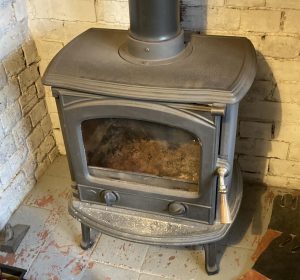

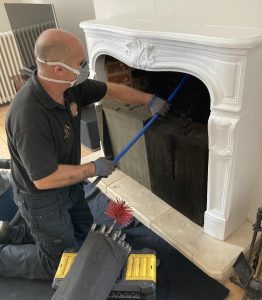
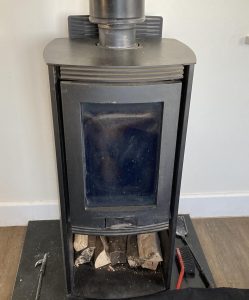
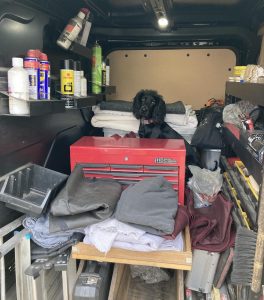 Here we were busy working at an address in Finchingfield doing the chimneys to a couple of large stoves, when we had a cheeky little visitor in the side compartment of the van. This was Poppy the customers little black Cocker Spaniel bitch, presumably on the hunt for some food, Cockers are known to be food obsessed life forms! “Yes, I’m checking out this van, I’m giving it a really good sniffing, but there is no food here”! Poppy is still quite young, not much over a year old, so she is still a pup really and the world is still such an exciting place, so who wouldn’t want to check out something new when it suddenly turns up on your driveway! The customer also have an old Chocolate Brown Labrador called Kato, who was being very well behaved and wasn’t going anywhere near the van and actually looked a bit sheepish, obviously concerned about what naughtiness his younger colleague was getting up to. They both did really make us laugh and brightened the working day.
Here we were busy working at an address in Finchingfield doing the chimneys to a couple of large stoves, when we had a cheeky little visitor in the side compartment of the van. This was Poppy the customers little black Cocker Spaniel bitch, presumably on the hunt for some food, Cockers are known to be food obsessed life forms! “Yes, I’m checking out this van, I’m giving it a really good sniffing, but there is no food here”! Poppy is still quite young, not much over a year old, so she is still a pup really and the world is still such an exciting place, so who wouldn’t want to check out something new when it suddenly turns up on your driveway! The customer also have an old Chocolate Brown Labrador called Kato, who was being very well behaved and wasn’t going anywhere near the van and actually looked a bit sheepish, obviously concerned about what naughtiness his younger colleague was getting up to. They both did really make us laugh and brightened the working day.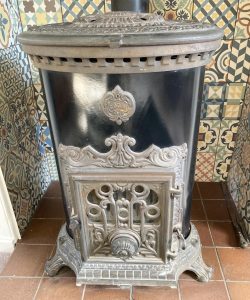 I recently swept this very unusual and attractive tall Petite Godin Stove at an address in Therfield near Royston. These antique stoves are quite a rare find these days, although I have come across one or two of these tall Petite Godin Stoves. I think these antique stoves are rather beautiful and in the right setting they can really add to the ambiance of a room and add value to a property. This stove was an admirable finishing touch to a snug room in an old, thatched cottage. I’m sure its presence means that the snug can be enjoyed by the family all year round! Looking on the internet they really hold their value and are now quite sought after, with a number of websites dealing with their acquisition and sale.
I recently swept this very unusual and attractive tall Petite Godin Stove at an address in Therfield near Royston. These antique stoves are quite a rare find these days, although I have come across one or two of these tall Petite Godin Stoves. I think these antique stoves are rather beautiful and in the right setting they can really add to the ambiance of a room and add value to a property. This stove was an admirable finishing touch to a snug room in an old, thatched cottage. I’m sure its presence means that the snug can be enjoyed by the family all year round! Looking on the internet they really hold their value and are now quite sought after, with a number of websites dealing with their acquisition and sale.